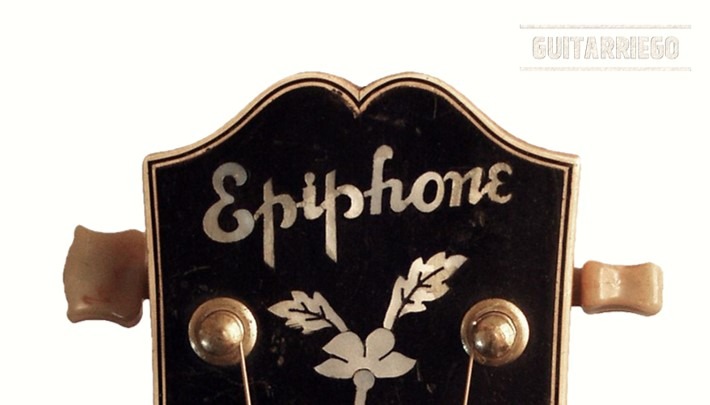As a follow-up to my earlier posting on this subject, here is a quote from Walter Carter's The Epiphone Guitar Book which is a history of the Epiphone brand. The relevant section from the book is an extract (pp. 33 - 34) from the chapter titled "The Stathopoulo Era."
"Any optimism Orphie [Stathopulo] may have had in 1950 was short-lived. In 1951, a strike shut down Epiphone production. Orphie was adamantly opposed to the union, and he found a solution in 1952 in his relationship with Continental, the distribution arm of the Conn company. With Conn's help. Orphie simply left the union behind and moved production to Philadelphia. As part of the deal, Orphie gave Continental the distribution rights in 26 states. 'Epiphone employee Edward Dunkum, in an announcement in The Music Trades magazine, promised improved production in the new facilities. "All skilled craftsmen will continue under the new setup," he said, "whereby the equality of workmanship will not only be continued on a high critical level, but actual be improved upon with the expanded facilities.'
"Dunkum also said that 'no changes in personnel have been made.' But that was hardly the case. Dunkum himself represented a personnel change, having recently replaced George Mann as vice president. Along with the experienced New Yok production crew, George Mann had stayed in New York, where he joined with instrument salesman Alfred Dronge in forming the Guild guitar company -- named in part because the core of the workforce was made up of ex-Epiphone union members.
"The catalogue proved to be a façade, behind which the Epiphone company was crumbling away. Orphie had not moved all of the production equipment to Philadelphia. Instead, he sold it off to Guild and Gretsch. If the Philadelphia facility was meeting the demand for Epiphones, it was only because demand was low. If the catalogue copy can be believed, Continental was now the exclusive distributor for Epiphone in all states.
"In the context of efforts to save an instrument company, Epiphone's last-ditch attempt was nothing short of sad."

